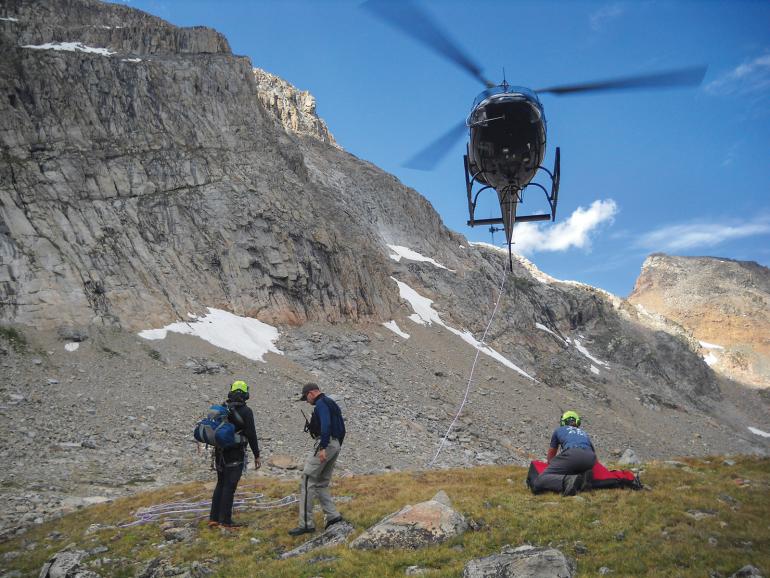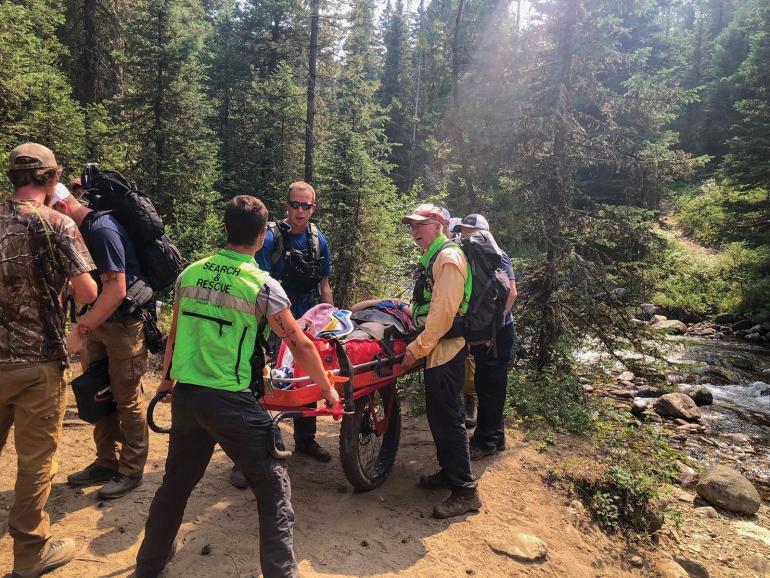Price Chopper
Breaking down the costs of an air ambulance.
When an epic day turns dire, calling for backup can be a critical resource. Serious injuries in the backcountry may require an air ambulance, but very few insurance providers cover the entirety of the flight’s cost—and it’s expensive.
First responders, like county search-and-rescue teams and the Life Flight Network, prioritize safety when responding to an injured outdoorsman. Neither organization benefits financially from providing unnecessary or excessive care. But in the field, what could be a life-or-death situation is not always apparent, and it may be necessary to get to a medical facility for further medical assessment. In hindsight, it may be clear that an injury wasn’t as bad as it could have been. But to assume the best-case scenario with a backcountry injury means risking the worst possible outcomes.
“It’s not just about saving lives,” says Steve Schmid, a Life Flight customer-service manager and flight paramedic. “It’s about saving the quality of life, so they can get back to doing what they’re doing.”
A patient always has the option to deny an air ambulance, but Gallatin County Sheriff Search and Rescue (GCSAR) says it rarely happens in southwest Montana. The average cost for an air ambulance to transport a patient to a hospital is about $40,000. According to Amber Hanes-Miller, the community outreach expert for Life Flight, insurance companies have historically covered about 80% of the helicopter transport. So, on average, the patient is slapped with a $9,000 bill. “And that’s being increased by today’s rates,” Hanes-Miller says.
Some good news is that in the wake of COVID-19, Congress passed the No Surprises Act in January 2022. This means that insurance companies cannot charge their customers the remainder of an air-ambulance invoice. And for the uninsured, a painful bill probably awaits on the road to recovery.
According to the Wildland Firefighter Foundation, many federal employees, like wildland firefighters, can even have difficulty getting the Department of Labor’s compensation to cover medical bills and services. Similarly, the Life Flight billing department is constantly advocating for patients’ medical coverage.
With the current platter of financial aid available for an air ambulance, worrying about your bank account doesn’t have to be part of the equation. But even with the current protections, one may still have to appeal an insurance bill, which can be a confusing and timely process. Sometimes, dealing with insurance companies can leave one wondering if they were better off left for dead in the mountains.
Insurance companies’ inconsistencies are one of the reasons that Life Flight offers its own insurance for $75 per year. It guarantees that the air transport will be paid for in full, no strings attached. The annual fee goes toward the Life Flight Network Foundation, which pays for training opportunities for search-and-rescue crews and assists in rescue missions at no charge to taxpayers.
Life Flight doesn’t have any kind of contract with the GCSAR. It’s a partnership built on its shared community service. But GCSAR isn’t qualified to transport injured recreationalists to a hospital via helicopter. It’s the only search-and-rescue operation in the state licensed to short-haul patients out of the mountains, but it’s usually a trip to an ambulance, which is where the billing starts.
When saving yourself isn’t a safe option, call for backup. Being prepared for the worst, may mean getting Life Flight insurance. “It’s good for anyone who leaves the house,” Hanes-Miller says.














